Lighthouses and light keepers serve many purposes besides marking dangerous coastlines, reefs or shallow areas and guiding ships to safe harbour. They also sound fog alarms, assist in aerial navigation, provide weather observations, maintain radio communication and assist search-and-rescue operations.
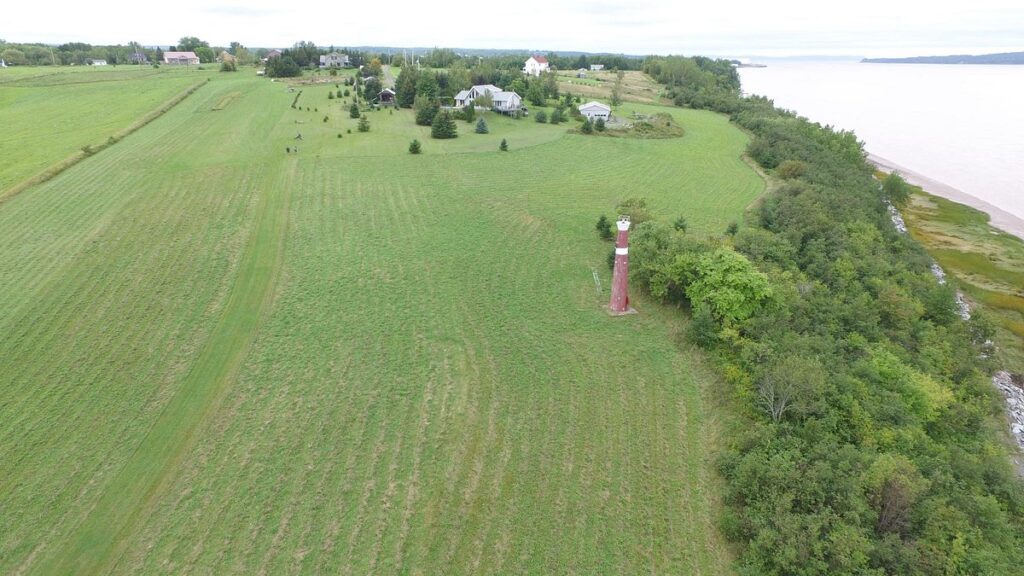
On the Avon River there are two, now inactive, lighthouses; Michener Point in Mount Denson and Horton Bluff in Lockhartville. There may also once have been a light at Summerville.
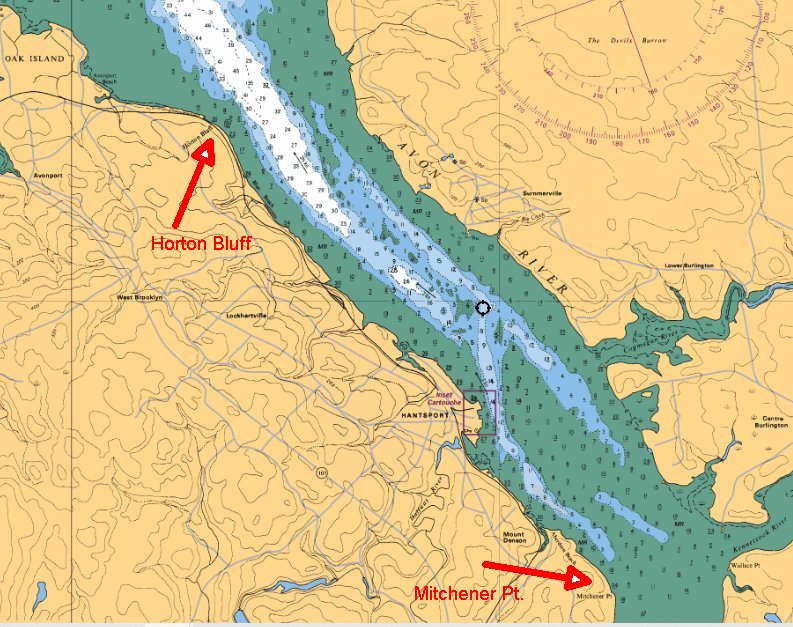
Mitchener Point
The following description was provided in the Annual Report of the Department of Marine and Fisheries for 1909.
It is a wooden tower, square in plan, with sloping sides, surmounted by a square wooden lantern, the whole painted white. It stands on a square cribwork foundation, and is 42 feet high from base to top of ventilator on lantern. The illuminating apparatus is fixed white dioptric2, of the sixth order. The tower was erected by contract, by Mr. L. Mury, of West Arichat, N.S., for $2,050.
The first keeper of the light was William A. Curry, appointed on June 15, 1908 at an annual salary of $180. The keeper was responsible not only for the main light in the lantern but also for a fixed red light that was displayed from a window on the southern face of the tower to indicate to vessels bound down the St. Croix River the exact turning point at the junction of the St. Croix and Avon Rivers.

In December 1967, the original Mitchener Point Lighthouse as shown in a Chronicle Herald newspaper article was replaced with an automated beacon.
HANTSPORT – A lighthouse made of fibre glass reinforced with steel, and weighing only 1,100 pounds, was erected Friday within two hours on the Avon River, at Mount Denson.
VICTIM OF EROSION – The 30 foot high beacon replaces the old wooden structure build in 1900 (sic) that witnessed a lot of traffic up and down the tidewater river in its day.
But the white building was beginning to tilt as erosion undermined its cement foundation.
The new light is on the hillside, well away from the riverbank and swirling tides. It was build by Atlantic Bridge, of Mahone Bay, and trucked to the site Friday. A crane hoisted it up and dropped it on a prepared cement base. The whole job of securing the base and attaching the light was completed in about two hours.
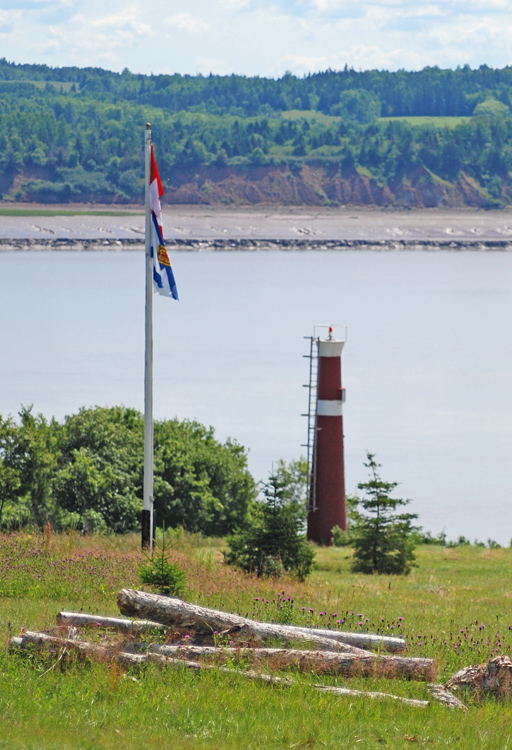
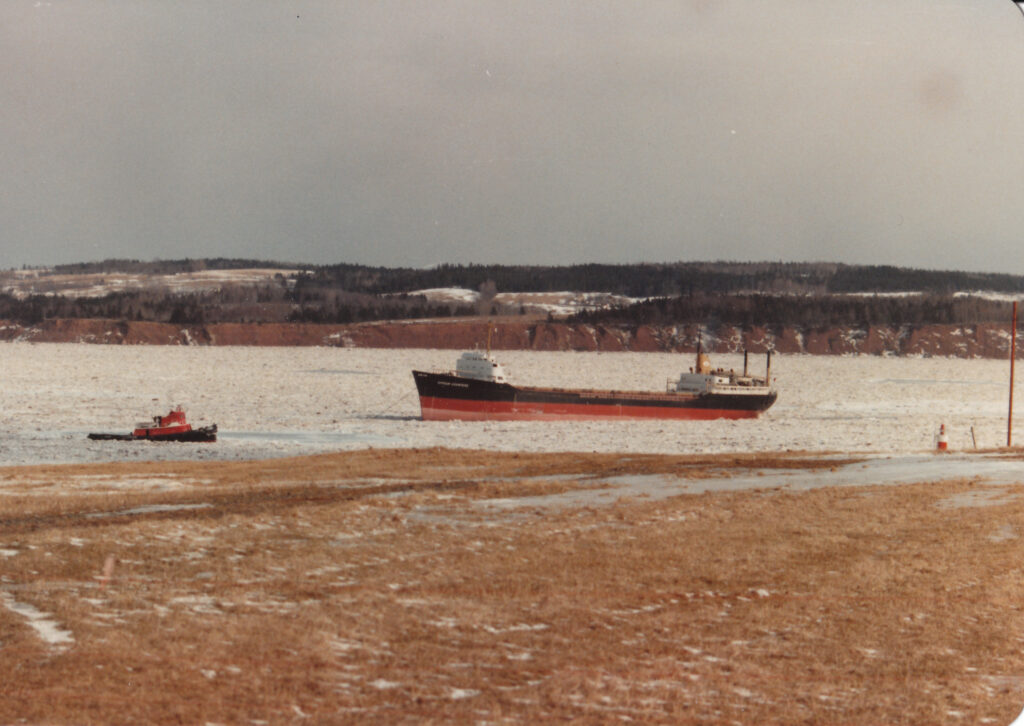
The Mitchener Point beacon was removed from service in 2013.
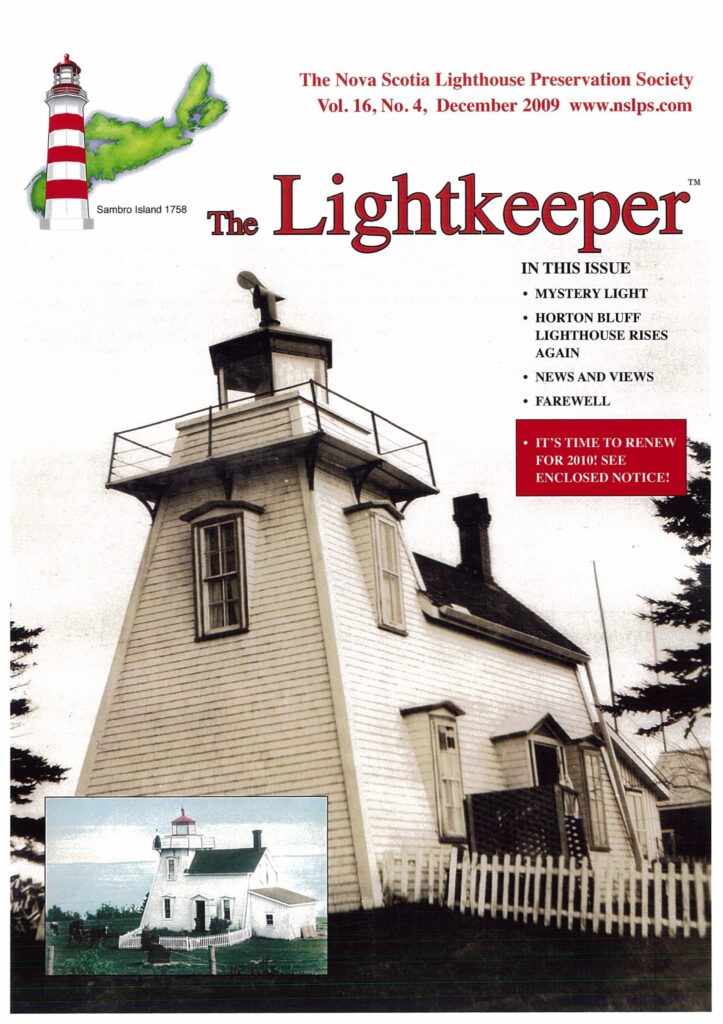
Horton Bluff
In 1840, a petition was presented to the Nova Scotia House of Assembly calling for a lighthouse on either Partridge Island or Horton Bluff in Minas Basin. This triggered a debate that would span the next several years on whether Partridge Island, situated on the north shore of Minas Basin, near Parrsborro, or Horton Bluff, located at the mouth of Avon River on the south shore of Minas Basin, was better suited for a lighthouse.
The Commissioner of Lighthouses visited both sites in 1841 and decided that Partridge Island was the preferable place. When advertisements for tenders to build the lighthouse on Partridge Island appeared in newspapers, thirty shipowners, captains, and merchants engaged in trade on Minas Basin sent a lengthy petition to the Governor of Nova Scotia claiming that the choice of Partridge Island was made “either by the ignorance of incompetent persons or powerful private interests.” The letter killed the plan for a lighthouse on Partridge Island, but it wasn’t until 1850 that funds were allocated for a beacon light at Horton Bluff.
In 1851, the first lighthouse was built at Horton Bluff. It was a square, white building, standing ninety-five feet above high water, and it had a fixed white light.
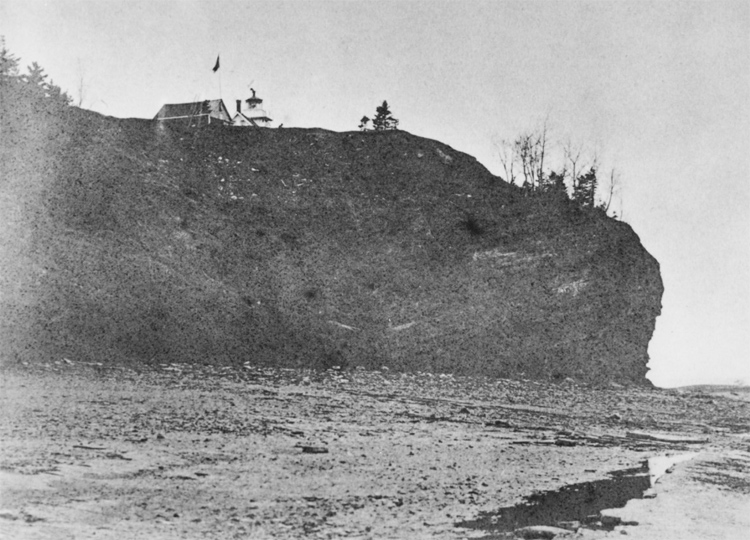
The original structure featured a light shown from a window of three panes that projected from the roof of the keeper’s dwelling. Three lamps were shown from the window. One lamp with an eighteen-inch reflector was directed down channel to the north, while a lamp with a twelve-inch reflector exhibited its light up the river to the east, and the third lamp operated without a reflector.
LIGHT KEEPERS: Prior to 1851, Capt. James Lockhart hung a lantern from a pole and tended it twice a day. This is about the time that shipping and shipbuilding on the Avon River was becoming significant. Robert King was appointed lighthouse keeper in 1851 but was dismissed in 1857 due to inattendance. Capt. Lockhart carried on until 1860 when Capt. James Rathburn became lighthouse keeper. After his death in 1865 the position passed to his wife Matilda (Trefry). According to Dominion annual reports, “Mrs. Rathburne, keeper of the Horton Bluff, died on the 27th May, 1870. Her son, Charles E. Rathburn, was placed in temporary charge, and was appointed keeper on the 26th October, 1870, at a salary of $232, to be increased from the 1st July, 1871, to $250 per annum”.
Charles E. Rathburn married Harriet Ann Phinney in 1861 and took up residence at the lighthouse until 1871 when Harriet died in childbirth. Charles remarried in 1872; his second wife was Susan (Faulkner) Monroe, a widow.
The 1873 birth registration of their first child gives Charles’ occupation as “Light House Keeper, Horton Bluff”.

Charles Rathburn died in 1879 and his widow, Susan continued as lightkeeper for 27 years.
In April 1883 the lighthouse was destroyed by fire and one child perished. By late 1883 the replacement, a square wooden pyramidal tower with attached dwelling, was completed. Sydney S. Crowe and James Smith of Truro built the lighthouse for $1,400. This is the structure known to many and depicted in picture postcards and on the cover of the December 2009 issue of The Lightkeeper, a periodical of The Nova Scotia Lighthouse Preservation Society.
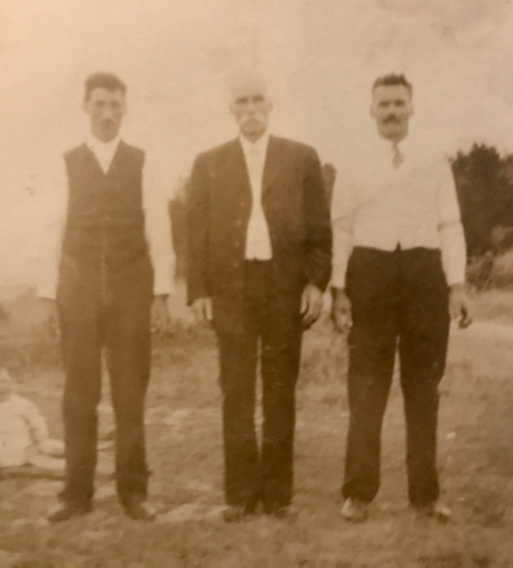
Interestingly, Elbert Rathburn’s wife, Eva Schurman was a sister to Bessie Schurman, wife of William Curry, the first lighthouse keeper at Mitchener Point.
In 1906, LeMarchant “March” Rathburn, youngest son of Charles and Susan Rathbone, became lighthouse keeper. Here is a photo of LeMarchant (with horse and buggy) and some of his family members including his mother Susan, standing in the gateway of the picket fence.
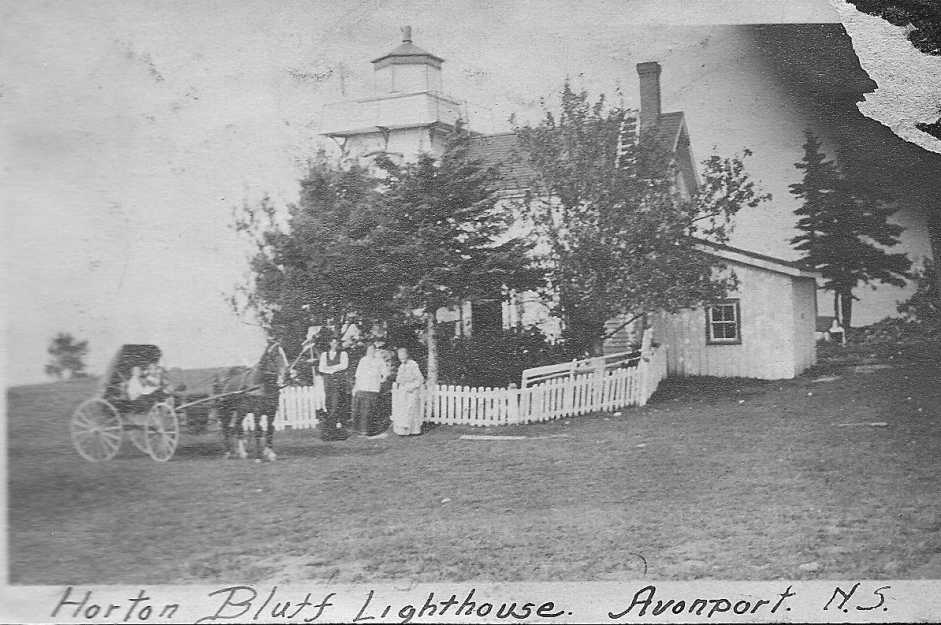
After the death of LeMarchant Rathbone in 1940, he was succeeded by Albert “Chick” Starratt and his wife Eva (Rogers). The Rathburn family’s long standing as keepers of the Horton Bluff Lighthouse came to an end after 85 years. Henry Harper served as lighthouse keeper in the 1950s and was succeeded by Rodney Henshaw.
The present Horton Bluff Lighthouse was built in 1961 along with two keeper’s dwellings, and the 1883 lighthouse was unceremoniously bulldozed over the cliff and burned after seventy-eight years of service. The 1961 lighthouse features an 8.7-meter-high tower rising from one corner of a square, flat-roofed building.
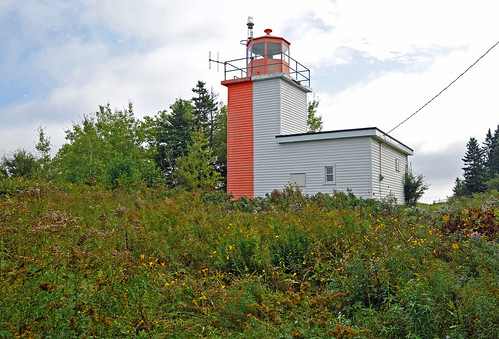
The Horton Bluff Lighthouse was deactivated on 12 July 2013, after commercial shipping on the Avon River ended with the closure of the Hantsport ship loading facility in 2011.
In 2009, Raye Myles completed construction of a replica of the 1883 lighthouse on the Bluff Road in Lockhartville. Further details of that endeavor can be read in The Lighthouse issue and on his website at Horton Bluff LightHouse.
Acknowledgement:
The Society wishes to thank Kraig Anderson of LighthouseFrends.com for permission to reproduce selected portions of text and photos for this article.
Notes:
- Capt. Ray Riley reports that there was a solid red light on the north east corner of the government wharf in Hantsport as a beacon from approximately 1850 to 1950 on the top of a two-storey building. In about 1950 the building was dismantled and an electric solid red light was installed in the same location on a 10 foot steel post.
- Dioptric – Relating to optical refraction. A Fresnel lens is a type of composite compact lens developed by the French physicist Augustin-Jean Fresnel (1788–1827) for use in lighthouses. It has been called “the invention that saved a million ships.” The smallest (sixth) order has a focal length of 150 mm and a height of 433 mm.
- The older gentleman in the photo can not be their father, Charles Rathburn, who died when they were between 3 and 6 years of age.
